Honor Magicbook 14 Notebook Review: Where Style Paints a Picasso
by Dr. Ian Cutress on May 15, 2020 9:00 AM EST- Posted in
- Laptops
- AMD
- Notebooks
- Zen
- honor
- Picasso
- MagicBook
- Magicbook 14
- Ryzen 5 3500U

There are three major selling factors when it comes to laptops: Specifications, Price, and Style. It is exceedingly rare to have a laptop hit all three, and if often takes a flagship device to score high marks on all three. The first two, specifications and price, often go hand in hand, but one aspect that often gets overlooked in the mid-range is the element of Style.
The Honor Magicbook 14 notebook, which is the subject of this review, scores remarkably high marks for style. Honor, and its parent company Huawei, are primarily in the smartphone business when it comes to consumer products, but over the past couple of years, they have both made efforts to enter the notebook market. With that they bring the sense of style that has governed their smartphone designs to become the second biggest seller in the world. Regardless of what may be happening on a political level, Smartphones from Huawei and Honor are very well received for their ability to capture the eye in a way that other devices do not, and it is this style that Honor brings to its new Magicbook line.
This covers not only the polished metal chassis, the easy-to-use keyboard and trackpad, the thin-bezel display, but the edges of our space grey Magicbook are lined with a stellar azure blue like I have never really seen on a notebook before. It is a marque which brings to mind the HP Spectre notebooks in black and gold – except where those devices are north of $1500 apiece, the Honor Magicbook is nearer $550 (currently £550 in the UK including sales tax). The Magicbook is an ultrathin device but keeps costs down by not going completely space-age in its material choice. The 14-inch form factor and the weight at almost exactly 3 lbs makes for a sleek lightweight travel machine.
Under the hood is an AMD design, with Honor choosing the Picasso-based Ryzen 5 3500U quad-core processor in cTDP down mode. I can predict that the first comment from a number of our technical users is going to be that this processor is the previous generation, based on AMD’s Zen+ design, while the company has recently launched Renoir-based Zen2 into its portfolio for these sorts of devices. Given that this is Honor’s first notebook into the international market, and how the timeframe lined up, the company went down the safer route to begin with, in order to learn the AMD platform, and hopefully offer a Renoir-based design in the future.
For specifications, the Honor Magicbook 14 has a 14-inch 1920x1080 LCD display, with ours peaking in brightness around 240 nits and while the initial calibration was not great, we did get a really nice calibration profile with our equipment. The display has a ~5mm bezel around the edge, reminiscent of other company’s ‘Infinity’ like displays. In order to enable a thin bezel at the top, the webcam has been moved to into the keyboard, similar to the Huawei Matebook notebooks. The display is not touchscreen, but it can rotate back to a 178-degree horizontal mode.
In our unit we have the Ryzen 5 3500U processor, which as I mentioned is actually at a slightly lower power setting than the 15 W standard, likely to balance performance and battery life (more on those later). There are Ryzen 7 3700U models, however we understand that those are for China only. This system has 8 GB of DDR4-2400 in dual channel mode, and storage options are 256 GB for the Ryzen 5 and 512 GB for the Ryzen 7. The storage drives are actually very nice, with Samsung NVMe units inside the system – there’s no mechanical spinning rust here.
The battery capacity is 56 Wh, which Honor rates for 9-10 hours in video/web/office type workloads at 150 nits (we got 7h at 200 nits in our web test). The battery supports 65 W fast charging with any suitable Huawei or Honor charging adaptor, with a claim of charging from 0 to 48-53% within 30 minutes. For a Zen+ based 14-inch notebook, those are some really nice numbers.
The keyboard is an attempt to copy Apple’s chiclet design. I am not that much of a fan of these sorts of keyboards, due to the limited about of tactile feedback, but the keyboard on the Magicbook is one of the nicer ones I have tested in recent memory. Perhaps just because I am using the UK version, but I am glad I have a tall enter key! Unfortunately, there is not a right click key that I’m increasingly becoming accustomed to.
The power button is located as a separate button to the right of the delete key, but it requires a proper press in order to activate. Inside this is a Goodix fingerprint sensor, likely identical to the ones that Honor uses on their smartphones – out of most of the fingerprint sensors I’ve used, I often find that the Honor/Huawei implementation of Goodix models to be some of the best and most accurate. The trackpad is super large below the keyboard, capable of ignoring false touches while typing. A number of notebooks in this price range often have dodgy trackpads, but this one is extremely accurate and responsive, and as much as I hate touch tapping, it takes a good amount on this trackpad so I’m very happy with it.
For connectivity, the notebook has a full-sized HDMI port, a USB 2.0 port, a USB 3.0 port, a 3.5mm jack, and a USB-C/charge port. Nothing too extravagant here.
Under the hood there is not too much to see. The 56 Wh battery takes up most of the space on the bottom of the device, sandwiched between the bottom facing speakers. The AMD Ryzen APU is located under a heatsink connected via a heatpipe to a thin fan blower, which exhausts the air out of the rear of the notebook towards the display hinge. The DRAM in this system isn’t replaceable, but the NVMe drive is.
For wireless connectivity, we get a Realtek 8822CE 802.11ac (Wi-Fi 5) controller, which supports a 2x2 connection with MU-MIMO and Bluetooth 4.2. There is also an NFC antenna next to the trackpad, which is used for Honor’s Magic-link application to easily share photos and videos between a smartphone and a laptop.
The model as tested in this review today is currently available at retail for £550 in the UK (including sales tax), which would make it around $560 in US prices pre-tax.
As part of our testing, we have run a few benchmarks and tests on the next few pages.


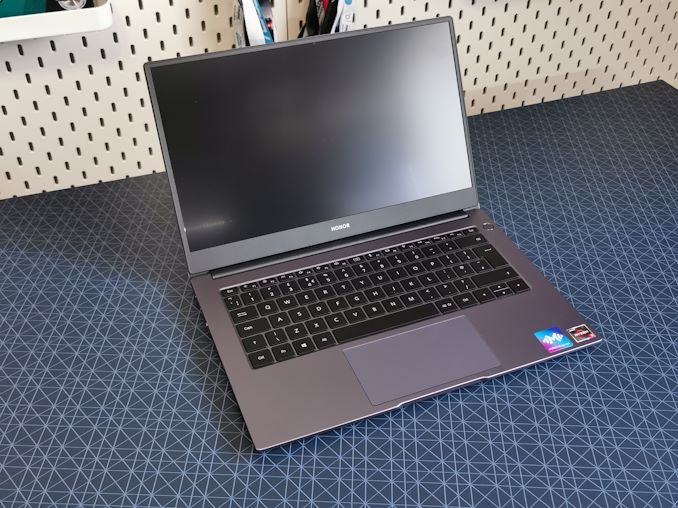

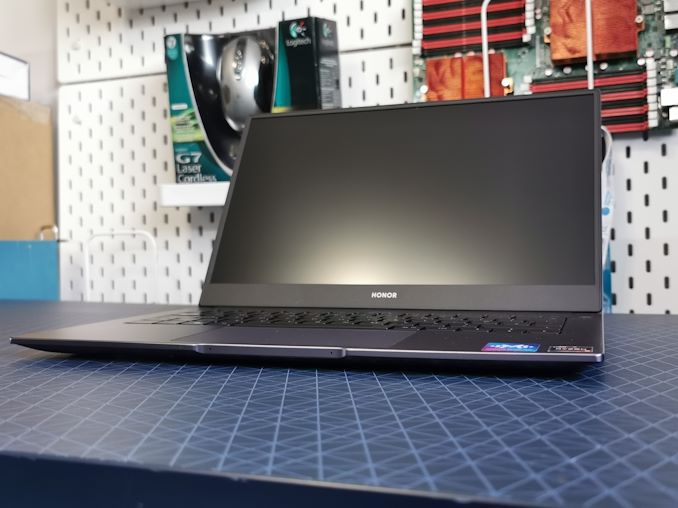
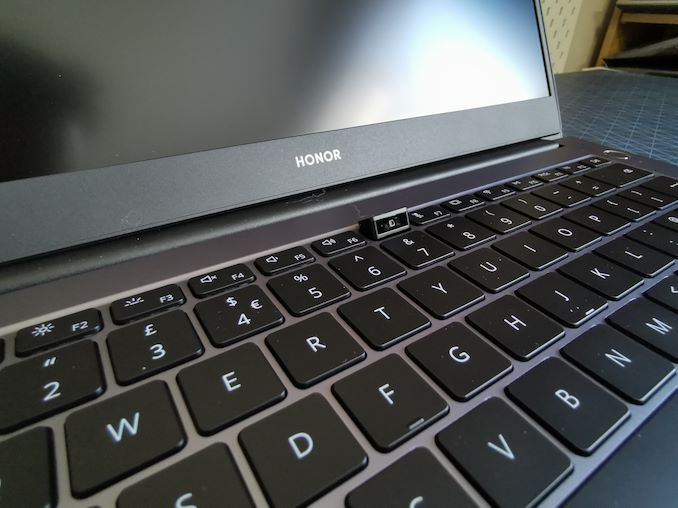



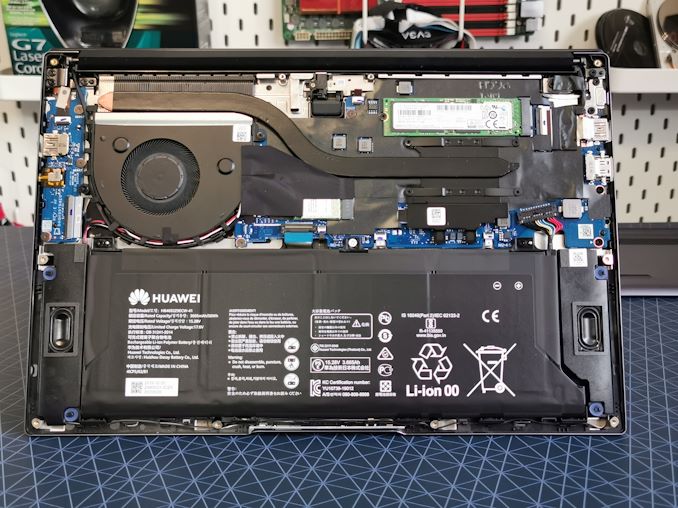


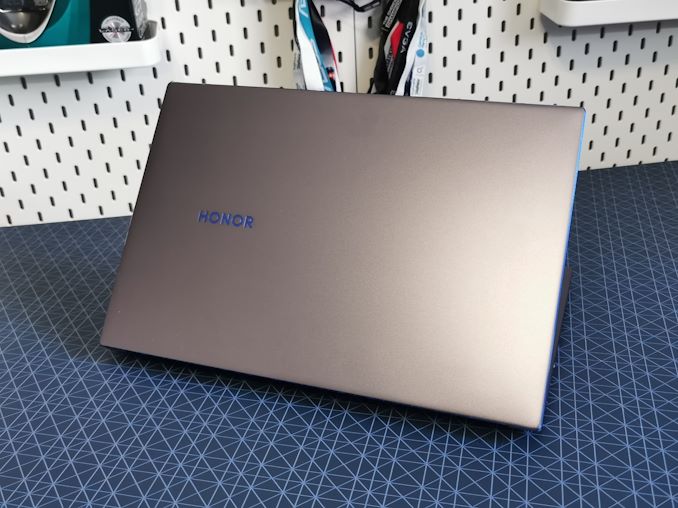








88 Comments
View All Comments
Sailor23M - Sunday, May 17, 2020 - link
Aa ha ha lov thisConnieD - Monday, June 8, 2020 - link
I agree. Wumaos out in full force.sonny73n - Saturday, May 16, 2020 - link
Go back to cnn. Stop spreading fake news here.Ithaqua - Sunday, May 17, 2020 - link
@sonny73n : I think you mean Fox "not really" News. CNN at least tries to to get some facts correct. Though Fox is more fun, knowing that they are on par with The Onion; and people think it's a real news network, not just a scam to mess with people.sonny73n - Saturday, May 16, 2020 - link
Nobody would believe your BS anymore. You’re helping your mafia government to slander competitors in order to eliminate competitions and kill free market. You’ve reached new low. How can you keep on living as a subhuman?Manofwind - Saturday, May 16, 2020 - link
When huawei's 5G equipment shipped to market, Qalcomm's 5G was still a plan then. You tell me, where to steal the 5G IP at that time?Ithaqua - Sunday, May 17, 2020 - link
@sharath.naik: Replace China with USA and communist with crippled democracy / kleptocracy and your statement still fits.There is no true free market in the world. Every country has rules to help themselves and protect those who give them money. US companies steal as well (just less obviously) and key industries are funded (in full or in part) directly and indirectly by government funds.
The "developed" world's patent & IP rules are a joke (hey Apple I'm looking at you) that either gets bent by money or abused by people who don't want to loose money. In theory it should be for the good of the citizens of the country and to help encourage R&D, not to abuse management bonuses and to stifle competition.
China is just more obvious about their abuse, since they plan things out instead of going by quarterly profit announcements. They know what to hide and what will blow over in 4/8 years.
Valantar - Monday, May 18, 2020 - link
"Free market" is an oxymoron. Markets are competitive, and tend towards monopolization if left unregulated (what's the best way of ensuring your survival if you're a leading company in a market? Buying out the competition or forcing them into bankruptcy.). Thus free-as-in-leave-me-alone markets are an illusion and become unfree as soon as someone gains enough power to exert in on others. (And don't come dragging that "market disruption" nonsense - we all know that doesn't work.) The closest one can come to a "free" (as in: fair and equal opportunity) market is a strictly regulated one.But ultimately, all market economics are based on the absurd idea that infinite growth is possible, and are based on a spiralling system of credits and debts. After all, debts have interest, so you need to bring in more money than you have borrowed. Where does that money come from? Other people's debts! So they need to do the same. If it worked it would be an oroborous, but this is just a spiral consisting of ever increasing debts and ever more precarious lives, where everyone but the super-rich lose in the end. This is not a system that is built to exist long term, and dramatic crashes are a fundamental part of it that cannot be avoided or even effectively alleviated.
Spunjji - Monday, May 18, 2020 - link
@Valantar - this is probably the best short-form summary of the paradox of the "free market" I've seen in a while. Nicely put!yannigr2 - Saturday, May 16, 2020 - link
The whole story is to prevent Huawei to become the next Apple+Samsung combined. Huawei is not considered, yet, a threat in the laptop market to US companies. A Huawei that could threaten Dell and HP, wouldn't be able to buy even a first gen i7 or an AMD Bulldozer CPU, not Renoir and latest gen Intel CPUs.